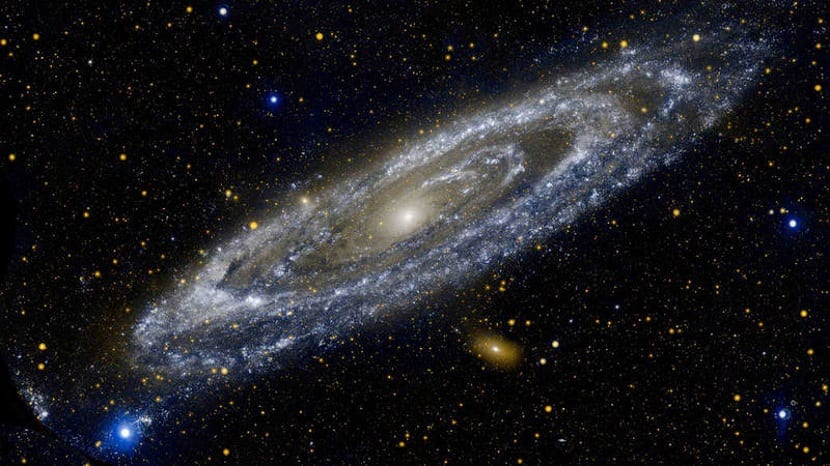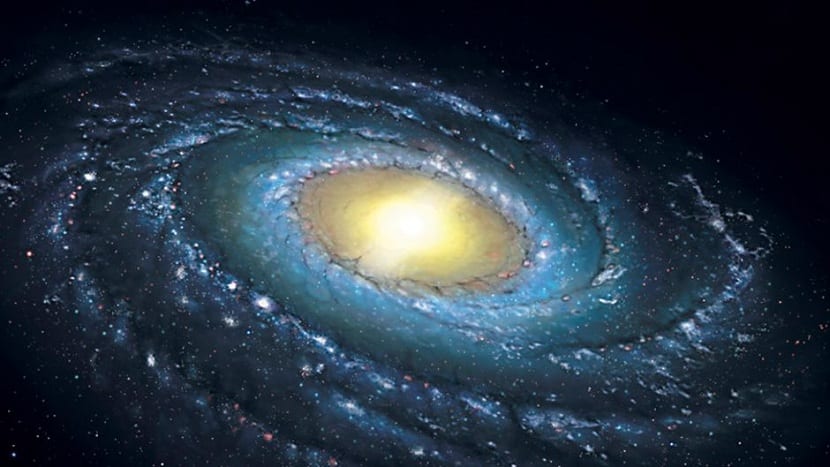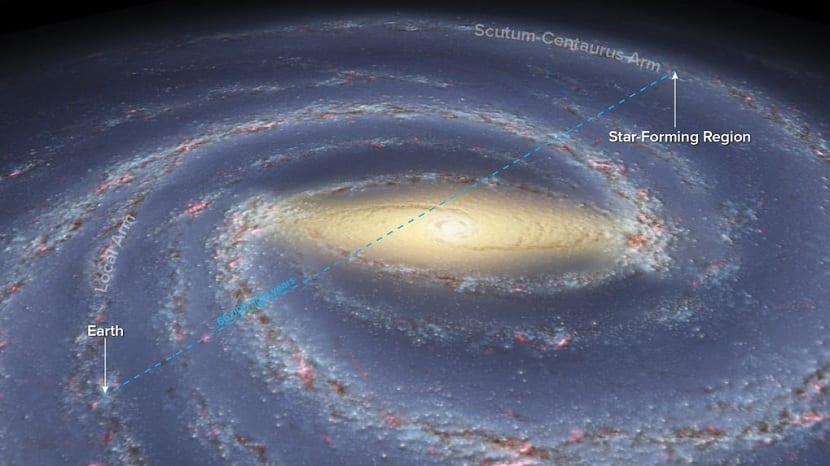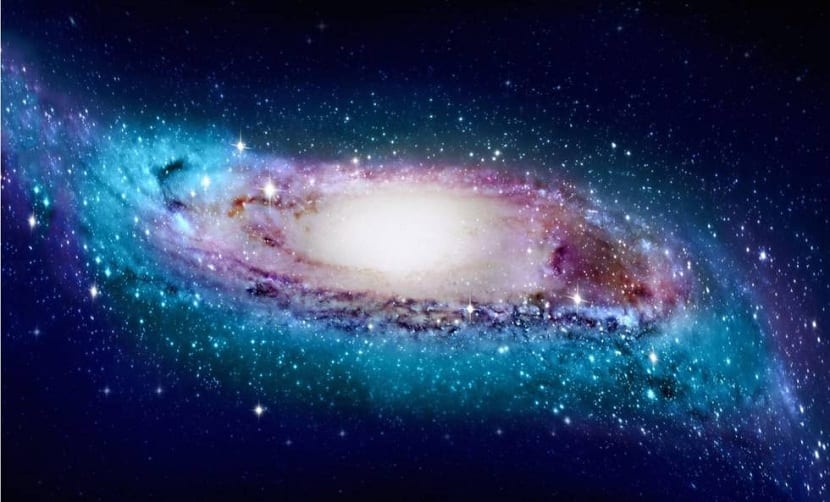
The galaxy we live in is called Milky Way. Surely you already knew that. But how much do you know about this galaxy we live in? There are millions of characteristics, curiosities and corners that make the Milky Way a special galaxy. It is our heavenly home after all, as it is where the Solar system And all the planets we know The galaxy we live in is full of stars, supernovae, nebulae, energy and dark matter. However, there are many things that even scientists remain a mystery.
We are going to tell you many things about the Milky Way, from its characteristics to curiosities and mysteries.
Milky Way Profile

It is about the galaxy that forms our home in the universe. Its morphology is quite typical of a spiral with 4 main arms on its disk. It is made up of billions of stars of all types and sizes. One of those stars is the Sun. It is thanks to the Sun that we exist and life has been formed as we know it.
The center of the galaxy is at a distance of 26.000 light years from our planet. It is not known for sure if there could be more, but it is known that at least one supermassive hole is located in the center of the Milky Way. The black hole becomes the center of our galaxy and has been named Sagittarius A.
Our galaxy began to form about 13.000 million years ago and is part of a group of 50 galaxies known as the Local Group. Our neighboring galaxy, called Andromeda, is also part of this group of smaller galaxies that also includes the Magellanic Clouds. It is still a classification made by the human being. A species that, if you analyze the context of the entire universe and its extension, is nothing.
The Local Group mentioned above is itself part of a vastly larger gathering of galaxies. It is called the Virgo supercluster. The name of our galaxy is named after the band of light that we can see of stars and gas clouds that extend above our sky through the Earth. Although the Earth is within the Milky Way, we cannot have as complete an understanding of the nature of the galaxy as some outer star systems can.
Much of the galaxy is hidden by a thick layer of interstellar dust. This dust does not allow optical telescopes to focus well and discover what is there. We can determine the structure by using telescopes with radio waves or infrared. However, we cannot know with complete certainty what is in the region where interstellar dust is found. We can only detect the forms of radiation that are penetrating dark matter.
Key features

We are going to analyze a little the main characteristics of the Milky Way. The first thing we will analyze is the dimension. It is shaped like a barred spiral and has a diameter of 100.000-180.000 light years. As mentioned before, the distance to the center of the galaxy is approximately 26.000 light years. This distance is something that human beings will never be able to travel with the life expectancy and technology that we have today. The age of formation is estimated at 13.600 billion years, about 400 million years after the Big Bang.
The number of stars that this galaxy has is difficult to count. We cannot go one by one counting all the stars there are, since it is not very useful to know exactly. There are an estimated 400.000 billion stars in the Milky Way alone. One of the curiosities that this galaxy has is that it is almost flat. People who argue that the Earth is flat will be proud that this is so too. And it is that the galaxy is 100.000 light years wide but only 1.000 light years thick.
It is as if it were a flattened and twisted disk where the planets are embedded in curved arms of gas and dust. Something like that is the solar system, a group of planets and dust with the Sun at the center anchored 26.000 light-years from the turbulent center of the galaxy.
Who discovered the Milky Way?

It is difficult to know for sure who has discovered the Milky Way. It's known that Galileo Galilei was the first to recognize the existence of a band of light in our galaxy as individual stars in the year 1610. This was the first real test that began when the astronomer pointed his first telescope at the sky and could see that our galaxy is made up of innumerable stars.
Already in 1920, Edwin hubble it was the one that provided enough evidence to know that the spiral nebulae in the sky were actually entire galaxies. This fact greatly helped to understand the true nature and shape of the Milky Way. This also helped to discover the true size and to know the scale of the universe in which we are immersed.
We are also not completely sure how many stars the Milky Way has, but it is not very interesting to know. Counting them is an impossible task. Astronomers try to find the best way to do it. However, telescopes can only see one star brighter than others. Many of the stars are hidden behind the clouds of gas and dust that we mentioned earlier.
One of the techniques they use to estimate the number of stars is to observe how fast the stars are orbiting within the galaxy. This somewhat indicates the gravitational pull and mass. Dividing the mass of the galaxy by the average size of a star, we will have the answer.
I hope that with this information you can learn more about the Milky Way and its details.